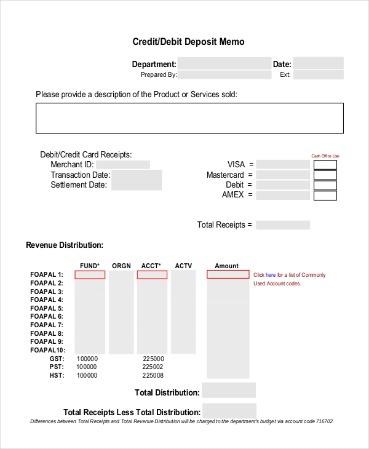
Over the past two decades, artificial intelligence (AI) has experienced rapid development and is being used in a wide range of sectors and activities, including finance. In the meantime, a growing and heterogeneous strand of literature has explored the use of AI in finance. The aim of this study is skillwise review to provide a comprehensive overview of the existing research on this topic and to identify which research directions need further investigation. Accordingly, using the tools of bibliometric analysis and content analysis, we examined a large number of articles published between 1992 and March 2021.

What is Artificial Intelligence (AI) in Finance?
The market value of AI in finance was estimated to be $9.45 billion in 2021 and is expected to grow 16.5 percent by 2030. We asked some of the most curious minds in life sciences and healthcare to share thoughts on their careers, the future of health and more. Each participant drew questions and shared their insights, knowledge and some personal fun facts that left us inspired about the future of health and wellness. The NYSE sent a crew to Madrona’s IA Summit in Seattle, where we had a chance to meet the leaders of exciting companies in AI and ask them to share questions and prompts on a variety of thought-provoking topics. But this isn’t just another Q&A series, we took those answers and transformed them into art – using AI, of course.
Your finance department is at the core of the AI transformation
As financial services companies advance in their AI journey, they will likely face a number of risks and challenges in adopting and integrating these technologies across the organization. Our survey found that frontrunners were more concerned about the risks of AI (figure 10) than other groups. The financial services industry has entered the artificial intelligence (AI) phase of the digital marathon. We recently conducted a review of gen AI use by 16 of the largest financial institutions across Europe and the United States, collectively representing nearly $26 trillion in assets.
The Future of AI in Financial Services
The last group studies intelligent credit scoring models, with machine learning systems, Adaboost and random forest delivering the best forecasts for credit rating changes. These models are robust to outliers, missing values and overfitting, and require minimal data intervention (Jones et al. 2015). As an illustration, combining data mining and machine learning, Xu et al. (2019) build a highly sophisticated model that selects the most important predictors and eliminates noisy variables, before performing the task. The second sub-stream focuses on mortgage and loan default prediction (Feldman and Gross 2005; Episcopos, Pericli, and Hu, 1998).

Solve your business challenges with Google Cloud

Using our own solutions, Oracle closes its books faster than anyone in the S&P 500—just 10 days or roughly half of the time taken by our competitors. This leaves our financial team with more time https://www.accountingcoaching.online/ focused on the future instead of just reporting the past. Workiva offers a cloud platform designed to simplify workflows for managing and reporting on data across finance, risk and ESG teams.
Vectra’s platform identified behavior resembling an attacker probing the footprint for weaknesses and disabled the attack.
AI can help companies drive accountability transparency and meet their governance and regulatory obligations. For example, financial institutions want to be able to weed out implicit bias and uncertainty in applying the power of AI to fight money laundering and other financial crimes. Companies that take their time incorporating AI also run the risk of becoming less attractive to the next generation of finance professionals. 83% of millennials and 79% of Generation Z respondents said they would trust a robot over their organization’s finance team.
Bibliometric analysis is a popular and rigorous method for exploring and analysing large volumes of scientific data which allows us to unpack the evolutionary nuances of a specific field whilst shedding light on the emerging areas in that field (Donthu et al. 2021). In this study, we perform bibliometric analysis using HistCite, a popular software package developed to support researchers in elaborating and visualising the results of literature searches in the Web of Science platform. AI-driven tools like chatbots and automated advisory services provide instant responses to customer inquiries, facilitating uninterrupted banking and financial advice. This constant availability not only enhances customer experience by providing immediate assistance but also supports financial operations outside of traditional working hours, increasing a financial institution’s operational efficiency and customer reach.
- The company’s platform uses natural language processing, machine learning and meta-data analysis to verify and categorize a customer’s alternate investment documentation.
- While these systems automate financial processes, they require significant manual maintenance, are slow to update, and lack the agility of today’s AI-based automation.
- As a result, financial services remain agile, responsive, and competitive in a fast-evolving market.
- Employees are relieved from mundane tasks, leading to higher job satisfaction and productivity.
Zest AI is an AI-powered underwriting platform that helps companies assess borrowers with little to no credit information or history. NYSE’s annual Sustainability Leaders Summit connects our community with sustainability thought leaders who are helping to solve local and global issues. This year’s Summit featured variety of topics including approaches to climate transition plans, strategies for renewable energy and the impact of sustainability measurement on future business decisions. AI finance tools not only make your finance teams more agile but also reduce errors and allow them to focus on more strategic tasks. The benefits of AI finance tools are clear and the return on investment (ROI) can be substantial in the long run. Flow by Nanonets is an end-to-end to AI-based AP automation software designed to help finance teams manage supplier communication, process invoices, and optimize the accounts payable process.
Eno launched in 2017 and was the first natural language SMS text-based assistant offered by a US bank. Eno generates insights and anticipates customer needs throughover 12 proactive capabilities, such as alerting customers about suspected fraud or price hikes in subscription services. Consumers are hungry for financial independence, and providing the ability to manage one’s financial health is the driving force behind adoption of AI in personal finance. Whether offering 24/7 financial guidance via chatbots powered by natural language processing or personalizing insights for wealth management solutions, AI is a necessity for any financial institution looking to be a top player in the industry. Deep networks, in particular, efficiently predict the direction of change in forex rates thanks to their ability to “learn” abstract features (i.e. moving averages) through hidden layers.
Prior to joining Deloitte, he worked as a senior research consultant on strategic projects relating to post-merger integration, operational excellence, and market intelligence. This technology allows users to extract or generate meaning and intent from text in a readable, stylistically natural, and grammatically correct form. User experience could help alleviate the “last mile” challenge of getting executives to take action based on the insights generated from AI. Frontrunners seem to have realized that it does not matter how good the insights generated from AI are if they do not lead to any executive action. A good user experience can get executives to take action by integrating the often irrational aspect of human behavior into the design element.
Booke has a Robotic AI Bookkeeper tool that integrates with QuickBooks Online (QBO) to review bank feeds and correctly categorize transactions. It utilizes AI models trained on historical business data to automate transaction coding to the correct general ledger accounts. Zoho Finance Plus combines the functionalities of various Zoho products such as Zoho Invoice, Zoho Books, Zoho Checkout, Zoho Expense, Zoho Inventory, and Zoho Billing into a single platform. This integrated solution is tightly connected with Zoho CRM, providing a unified experience for https://www.adprun.net/hr-services-for-small-business/ managing contact interactions, sales and purchase orders, inventory management, expenses, subscriptions, accounting, online payments, and tax compliance. Sage Intacct integrates with other business applications and offers customizable dashboards and reports to help businesses make informed decisions and drive growth. It offers core accounting functions such as general ledger, accounts payable, accounts receivable, and cash management, as well as advanced features like real-time reporting, project accounting, revenue recognition, and global consolidations.